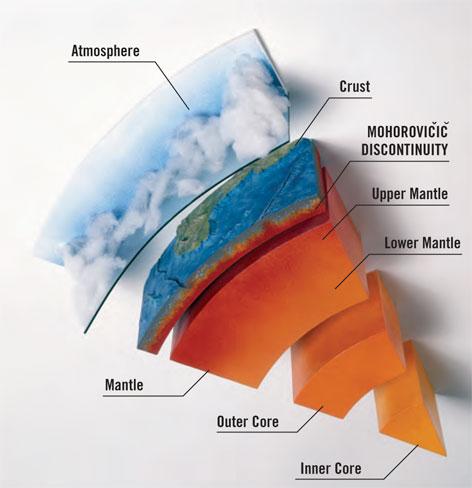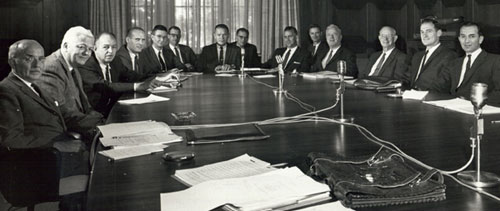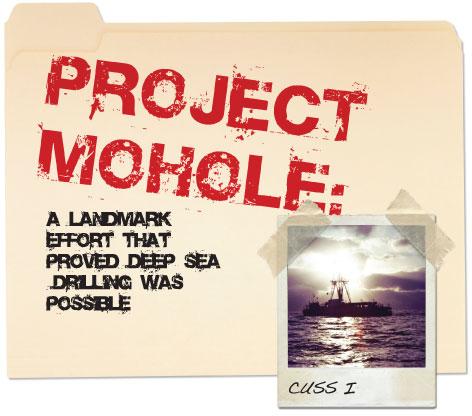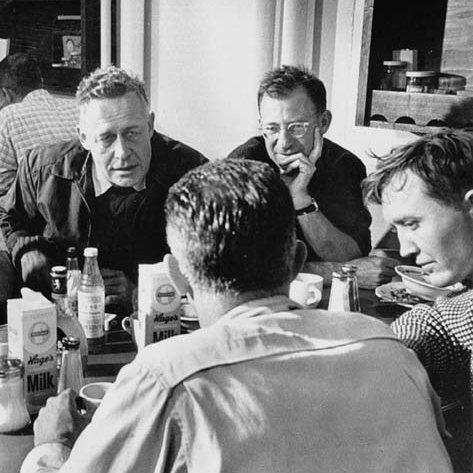Immediately after the World War II, USSR and US had plucked as many Nazi Scientists and scientific research papers of the German Defence Establishment and after that almost immediately entered into Scientific Race on all fronts with each other. This was necessary as both wanted to topple the other one in terms of their Scientific capabilities to sell their military and other products to the rest of the world. However when it came to space race the USSR was leaps and bounds ahead of US. Not surprising, because while US And USSR were rummaging through the war torn remains of Germany it was USSR who could get hold of Wernher Von Braun the creator of first rockets ever.
In late 1950 while the US rockets were not even able to lift of the ground, USSR had already launched the very first satellite “Sputnik” into space on 3rd October 1957 and just a month later on 4th November 1957 sent a street dog called Laika into space. While the American Space associations were struggling on the space front a group of people from American Miscellaneous Society made a presentation to the National Science Foundation about a project that would complement the US space attempt, by being the first ever to drill a hole into the earth’s crust through a plate called the Mohorovicic Discontinuity (or just MOHO) and obtain a piece of Mantle. The Idea was sold to the National Science Foundation (NSF) as a National Pride that would showcase to the rest of the world that US (unlike USSR) was capable of not only leaping into space but also exploring deep into the Earth. This project was to deliver US from the Humiliation of losing the space race to USSR.
The group of 7 people who first approached the NSF with their proposal, were so divergent in their views and so inconsistent with their approach that NSF rejected the proposal and sent them packing, even though they were sold on the concept of National Pride.

These 7 guys, where also very well connected and involved in the more serious science club called the National Academy of Sciences (NAS) which had a sterling reputation so far, used the name of NAS to again reach out to NSF for funding their entire MOHOLE Project. NSF, because of political reasons could not say no to the NAS proposal but at the same time did not want to commit to the entire project as they did not see a very clear Objective of this project being defined by NAS.

NSF provided a funding of USD 15,000 for a technical feasibility of the project in April of 1959, and the cost of Phase – 1 trial on successful completion. And thus started a project which was destined to become a huge and embarrassing failure at international level.
This project was led by technical people without much organization or management skills. There was not even a commonly agreed upon goal for the project among the various stakeholders. For example, the Technical Director for this project Bascom was mostly focused on moving to the larger phase 2 project where real money could be made, while Hesse was looking at it from the view of proving his point that Mantle was closer to earth’s crust under the sea bed compared to the dry surface of the earth. Later he wanted to create his validation from this project as a scientific journal of his own. Some others had joined this project, even though they were not at all convinced about its utility, simply because they literally had nothing to do and wanted to win some accolades and fame in the field of science and technology.
With such motely group they started on Phase 1 which was just a small project where the technical feasibility was to be proven.

Since USD 15,000 was not enough for physically boring holes in the sea-bed they convinced a consortium of 4 oil companies to provide them a drilling ship with a crew as well as drilling equipment. This the oil companies provided with the promise of technical knowledge sharing of deep sea drilling techniques which those companies could use for offshore oil explorations later.

This trial was very successful and they drilled 5 bores in the sea bed off the shore of Mexico, one of which extended 601 feet beneath the seafloor, were drilled under 11,700 feet of water. This was the deepest in the world till date in terms of depth of water and depth of the bore under water. Oil companies got to learn good technical specifications from this experiment. This first phase success was done well in time but since this was also a slightly open ended project from the point of view of cost (to be reimbursed by NSF on success, the billing to NSF was done for USD1.7 million. This made handsome profits to the 7 member team leading this project as the ship and crew were mostly supplied by the Oil Companies consortium. This was April of 1961.

This is when greed took over. The president of US himself wrote a letter of commendation to the team on their success.
For the Phase – 2 the team got together and had tremendous difference of opinion on how the phase 2 needs to be executed. Some of the thought that they would need to build one new larger boring ship and then later make another even larger ship for boring deeper, based on the learnings from the intermediate ship. While the other groups thought of doing away with the concept of ship but have a floating propelled platform that could be expanded on site to meet the depth of the bore. The third group insisted that it would be best to have one large final ship that was over-engineered for the boring depth so that it could be used again later for other applications like oil drilling or some other geological research after the Mohole project.

Finally the concept of “Single over-engineered” ship was agreed upon only through the bitter intervention of the government and congress as there was absolutely no progress due to bitter rivalry among the core group members on just about everything, from office space to stationary being used to technical specifications to the choice of the supplier for building the ship and other custom made tools. This cost the project one full year of its phase 2.
The worst part was that there were absolutely irreconcilable differences of opinion about the scientific goals of the Mohole project. This is something that could not be reconciled till the very end of the project.

The NSF and the Senators who were involved in this project suggested that the project should be supported by some huge Oil Exploration companies for better logistic support and selection of site. This actually created further problems as each of these oil exploration companies ended up competing with each other instead of working together. Each of them wanted to have the drilling done where their own sea operations were higher so that more billings could come to them instead of the other oil companies. Since each of the oil companies were very powerful they had substantial pull with the government and used their pull to try and sway the drilling site suitable to them. This created a total chaos like situation.
While the oil companies were playing this tug-o-war, the scientists were literally at each other’s throat about the steps in which the project would be executed. Someone wanted to go for incremental steps in project lifecycle, with each step proven for completion before moving towards larger step thus allowing them to pull out whenever they could without going all-in. While some others wanted to go all out so that funding from the government would not become a problem and all money would be available almost upfront. The government was breathing down their neck for getting it done as soon as possible. This problem continued till another 2 yrs. This bitter bickering among all the stakeholders became so visible that press and the public started to use another slang for this project (you can used your imagination to understand what “….hole” they ended up calling this project).

When the time came for finding the right vendor for building this “one big over-engineered ship”, several proposals were invited by interested parties. This gave an opportunity to many of the original members of the project, who themselves opened up different companies and bid for the very project they were managing. Some made bids keeping some other companies as “front”. This lead to an all-out war within the selection committee as the very persons who were selecting were also the ones who had submitted the proposal. The NSF found out this “conflict of interest” and wrested control of this project under itself. This lead to mass resignation of the original stakeholders, who now openly bid again as suppliers. The bitterness that it lead to, came to such a head that NSF started to look for suppliers outside the core team now bidding. They were “Forced” to hire a company called Brown & Roots by the government bodies. Brown & Roots were one of the main political contributors to then Vice President Lyndon Johnson.
Brown & Roots proved to be even bigger disaster as their ideas were completely unplanned, ad-hoc and impractical to begin with. While all this was happening, Brown & Roots were billing by the hour and by this time the total project cost had cumulated to USD 30 Million (approx.) even though not even a single thing as basic as selection of boring location was finalized, let alone the building up any physical equipment.
A congressional hearing followed where several key stakeholders of the project were severely and openly rebuked in the presence of public and press. NSF wrested almost total control of the project after this hearing and reached out to some of the best ship builders of the time to give proposals for building a boring ship as per the specifications of the project. These specifications were not even 50% complete by then but out of sheer desperation to show that “Some work” is being done, they went ahead with the RFP.
Internally they were all hoping that the bid for the ship would come to USD40 million but the lowest bid that came from a ship builder was USD125 Million (about a Billion dollars in todays purchase parity). This bid also had and a clause for upward price revision as the specifications in the RFP were incomplete.
Pressed with national pride and fresh from congressional scrutiny and dressing down by press, they decided to still go ahead with the project and awarded the contract to this ship builder.
By 1967 it came to light that several oil companies detached themselves from this project and started working with some of the scientists of the phase 1 Mohole project to create their own exploration vessels without taking any funding from the government or involving any other government scientific research organization to cut down bureaucracy. Some of the could build the ship in just one year. The first ship that got launched by one of these individual parties was Golmar Challenger that hit the sea in 1968.
In March of 1967 the congress pulled the plug on this project where not even the specifications of the project were completed and yet the project had costed them USD 60Million.

This project could not even be used for any learning experience for the other oil or scientific research organizations. This was one of the project that was a total loss in every single aspect.
In fact this is one of the projects (among several other govt. funded projects) that finally lead the US Congress creating an independent body for space research and exploration called NASA on 29th July 1958.
Some of the crucial learnings from this project are: -
-
Just a lofty ideal is not a project objective. The lofty ideals have to clearly articulated into a SMART project objective so that people and stakeholders can easily align with it.
-
Just having the best technical brains in a project will not guarantee success. In most projects it has been seen that this is one of the biggest reasons for project failure. There has to be proper and deliberate project management that is done in tandem with the technical brains and not under them.
-
The project must always be broken down to sufficient details to fully understand all the work that needs to be done in the project. Its never a great idea to just start working and later realizing that whatever you did was not good enough to finish the project.
-
Having a clear objective reduces unnecessary academic discussions that slow down the project or pull them in various directions.
-
No matter how complex the project is there should not be parallel project management teams especially when the objectives themselves are not clear.
-
Lack or absence of communication plan or lack of adherence to a communication plan would always give rise to unhealthy politics.
-
Processes that were used in a smaller successful project would not necessarily scale up to the bigger and more complex projects.
-
Absence of Risk Management could make even the most well funded projects impractical and a drain on resources.
-
Ethics in a project are not optional. They are crucial to success.
-
If you do not learn from a failed project you are condemned to repeat them.
===================